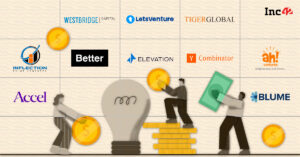Here’s another from The Startup Magazine Female Founder Series. We interviewed Erin Minckley — a Chicago-based artist and new author of “Artists Who Thrive”. Her book empowers and encourages artists to follow their dreams but actively promote their own work—being successful entrepreneurs.
To Erin, the image of the starving artist is not realistic, especially in today’s economic environment. Along with sharing her own story being a single mother and small business owner, she gives readers honest commentary and tips and tools through three sections : Learning Resilience, Creating New Relationships and Achieving Results.
Here Erin tells us more about her entrepreneurship lessons, journey, and success story:
TSM: Tell us, what is the central theme of your book, Artists Who Thrive?
Erin: The theme of this book is how to profit from your creative pursuits. It’s not a business strategy book as much as it is a mindset and empowerment book.
TSM: Why should artists learn about business?
Erin: Artists need to make a living, just like everyone else. They are uniquely set up to be entrepreneurs because they set their own hours, their own value, and their cashflow is limited only by their motivation and execution of good work habits. Oh, and marketing themselves. Art sells. Money loves art and art loves money. So why not profit? You don’t have to be really insanely good to go into business for yourself and start making money. I have an MFA, not an MBA and there is something sort of awesome about beating the odds.
TSM: You focus on the importance of overcoming barriers in your book. Why is that important for artists aspiring to be entrepreneurs?
Erin: Artists are creators and innovators. Artists have brilliant minds that accountants and engineers couldn’t even create an algorithm for. Their authentic “magic,” as I call it in the book, is unique to them. All artists have it in them to succeed and be free from the stereotypes of being broke and barely surviving. But, that doesn’t mean it will be easy… In order to overcome barriers, artists first need to look at their lifestyle, their network and their habits. The way we operate is often not professional, in the sense of how attorneys or dentists behave. All wealthy people, all successful people participate in some cultural norms and structure that artists can chose to obey or not. Success awaits if they can master money, time and space, physical vitality and relationships. That’s where we start to see Results.
TSM: It seems like many lessons in Artists Who Thrive apply to all aspiring entrepreneurs as well. What kind of reaction have you gotten from any entrepreneurs that are not artists?
Erin: Entrepreneurs are artists, as far as I am concerned. To start a business is to have an idea. To push their ideas to the limits and make them come to life. It’s like a potter who stares at a block of clay and says “This will be a bowl.” They have the vision to see it through to reality from just mere imagination.
People (business minds or not) tend to say “I’m not good at art.” Therefore, they believe they are not artists. From the time we are in first grade, we learn that Suzie is good at drawing and painting and we think that we are bad. So… we say to ourselves that we should give up; we’re not artists. The funny thing is that if we did not have that impulse to compare ourselves to others who are skilled, we could pick up a tube of acrylic paint and a blank canvas and ENJOY just messing around. Making something out of nothing. Just combining things until it looks good and feels fun. Or it looks terrible, but it was a cathartic half an hour to just play again. Creativity isn’t mastery. Being creative is work. It requires a level of refinement that goes like this: try, fail miserably. Try again, yes, it still sucks. Try more, it’s ugly, but not as bad as the first time. And so on, until finally, on the seventh try it’s pretty darn good. Isn’t running a business just like that???? Entrepreneurs say “you don’t know what you don’t know.” That also applies to creating. You make stuff until you KNOW how to make stuff. No one starts out being perfect at any skill or task or job. We learn along the way.
TSM: You have crossed the chasm between artist and entrepreneur to build your own company. Tell us more about what Relativity Textiles does?
Erin: So, I have a very fun career. I design and manufacture luxury wallcoverings. I am also a muralist and commercial artist. What it really means is that I am the CEO of a company that sells wallpaper on the Internet. I communicate with interior designers, architects, home owners, and brands about my products, day in and day out. About 10 percent of the year, I am drawing and painting, which is then translated into patterns for wallpapers. I am also the lead sales person, the part-time web designer, the book keeper and the janitor. I do a lot of shipping and administrative stuff. But, at the end of the day, I take pride in the fact that my art has been to almost every state in the country and made it into the lives of many people by way of wallpaper. I support myself and my two kids 100% with this business and I am honored to get to call this my job.
TSM: You also made a leap from a corporate job to a startup. What were the first hurdles for you in starting your business?
Erin: Well, I used to actually teach college art classes. I also worked part-time in print manufacturing. I wasn’t making a living wage doing either job and so one day I decided to quit my jobs and start a business. I had two young kids and it was the craziest thing I’d ever done. One night, in 2015, with a nervous four-minute video, I decided to run a Kickstarter campaign. Sixty days later, with the help of 225 friends, I was fully funded and launched my first line of wallpapers, my website and my social media profiles. I raised $20,000. Only seven percent of Kickstarter campaigns ever reach that type of goal, which I only found out last year. It was a risky move and I don’t regret it. There was a “thrive or die” mentality that I think pushed me to do it. I had no other options at that time. I was filing for divorce and had over $100,000 in student loans to pay off and no job. I needed to prove to myself that I had some power lying dormant within me. I shot for the stars and I succeeded. I recommend it to everyone because Kickstarter isn’t just about gaining the capital you need to fund a business venture, it’s also about establishing a group of early adopters. The ones who really believe in you and motivate you to keep going.
TSM: Give us a bit more background on the Relativity success. As your company is launched and growing, what are the additional challenges to making it sustainable? Hiring? Getting visibility? Raising capital?
Erin: Year six we are experiencing the BEST growing pains. I am looking to hire someone and train them to run this business, doing many of the daily tasks that I do now. I have been sinking in lots of money for SEO and meta data tagging on Pinterest, which has increased traffic to my e-commerce websites by like 3,000 %. We are finally doing really well and now I have to get smart about where to invest money. The future of the business is GROWTH and especially in this pandemic era where we are all stuck inside staring at our four walls. Everyone wants wallpaper! So, I am looking into new markets like rugs and furniture. I am working on producing a lighting line that will launch this spring. I am hoping to have a retail storefront by end of 2021. All of these things are slowly percolating.
I am assembling a team of people to help me because that’s the secret sauce—you can’t do this alone. Visibility is slow and steady like the tortoise. I don’t need a million views in a day; we couldn’t even handle an influx like that. So, I am very happy when I login to my Shopify account and see that 3,000 people visited the website this month. It’s very hopeful when someone in Florida is shopping on the site right in that very moment, because I feel connected to them, even though they are a stranger. I get to feel their virtual high five, like “Hey sister! I love your artwork! Good job! I’m saving up to re-do my powder room.”
TSM: Relativity Textiles is a great example for artists to learn from. Give us another anecdote or two about other artists who’ve “thrived” with business success.
Erin: Thriving is relative. Some people wouldn’t be happy until they live in a mansion and can swim in a room full of gold coins like Scrooge McDuck. I would be happy to own a small house and pay off my student loan debt. I have a friend who is currently working as a real estate agent. In her role there is a lot of creativity. She paints and does embroidery in her spare time but she realized that her skills for teaching people translated well in a field that’s rather lucrative. She moved into an incredible home in a nice neighborhood in Chicago and drives a fancy car. She’s got plenty of money to donate to causes that she loves like animal shelters and public parks. She is providing a very comfortable life for her family and is still able to take some time off to practice her art. She’s in the phase of building her empire. Once she hires enough agents and trains them well, she can slowly step back, like I am doing to focus on creative pursuits. I call her a chameleon. She can schmooze it up with a wealthy client who’s buying a $3 million home in Lincoln Park neighborhood but she can also drink a beer at a block party with her friends and kick a soccer ball around the street in flip flops. Artists don’t lose their grit, no matter how much money we make. We will always be scrappy and resourceful. We will always be a little anti-establishment and rebellious.
What I love about artists is that they define their own rules for life. That’s thriving. Because life is too short to do some job that someone else told you to do, just so you can pay your bills and have a life insurance policy and then die. Clocking in and out isn’t what we were made for. Artists are meant to change culture by way of revolution, ideas, emotion, protest. What my friend is doing is setting up her life to support her instead of waiting for her art to support her. She’s making it so she will have some time to her own pursuits eventually. I admire and respect the hell out of her for her resilience. She’s mentioned in the book as the chameleon.
TSM: Going back to your early career decisions, tell us what factors influenced your decision to launch Relativity Textiles and gave you the entrepreneurial passion that you apply to it?
Erin: I went to graduate school at the number two art school in the country. It was a prestigious degree that I was awarded and a few fellowships to boot. But when I left, I felt that there were no options for career other than to teach. I had mouths to feed. I had a vision of owning a home and accumulating some wealth for my kids’ college fund. I was pretty disillusioned and desperate. I thought to myself, “I am going to try this. What’s the worst thing that can happen? I could fail! But, then I’d be no further behind than I already am!” And so, I launched the company.
The part of the business that really lights my fire and makes me spring out of bed each day is that I wove in some conceptual aspects of my art making days into the product design. I used to make tapestries and 3D sculptures that were about cultural narratives. Loosely I was curious about belonging and how we see ourselves and others. Pattern is a huge signifier of race, nationality, tribes, and religions. So, textiles was an easy conversation to start, because it’s familiar. We all know a carpet or a wedding dress. We all know a tile or a dish with hand-painted flowers. Those things are common in all countries around the world, but the design may slightly change.
I wanted to include countries who may often be overlooked into the interior design conversation. What we bring into our homes, we tend to learn to love. We live with it. We cherish the memories made in those places. If we can bring the foreign into our lives, even if it’s symbolically, by way of wallpaper, then we can embrace other cultures. We can embrace traditions that aren’t our own. There would be a level of inclusion and equality in our everyday lives. THAT is what makes Relativity Textiles unique. I don’t drag and drop cultural motifs like “Asian vibes” into my collections. I spend weeks researching the sixth century dynasty of Japan to uncover that the chrysanthemum flower was the symbol of the royal family. Then that flower becomes the mascot for my Japanese wallpaper design. The motif happens to also be the flower of the city of Chicago, which means it comes full circle back to my life. These connections are all around us, waiting to be made.
TSM: What is one piece of advice you can offer other artists that want to follow an entrepreneurial path, on how they can be successful?
Erin: Buy a suit or a power jacket. Get some business cards made. Join a networking group full of people you would NEVER in a million years HANG OUT with. And go talk to them. If you’re too shy to start shaking hands, then just go and observe. Be a fly on the wall. See what professionals act like, what they talk about and see what the response is when people ask you “What do you do for a living?” Prepare a one-minute description so you can make it easy for people to understand. Make sure you have some photos of your work to show in case they ask to see. You just might get your first paying client out of it. If not, you might meet a web designer or an intellectual property attorney. Or, you can just enjoy one night away from your native habitat.
TSM: This is great advice. Are you on social media and can your readers interact with you?
Erin: I am on social media as @ArtistsWhoThrive and @RelativityTextiles and you can find me on the web at profitableartist.org and relativitytextiles.com Feel free to send me an email here.
TSM: Lastly, tell us something about yourself that most people don’t know
Erin: I am an identical twin! My sister is also an artist and studying to become an art therapist in Seattle, Washington.
TSM: Excellent Erin. You’re certainly making an impact with your art, your startup, and now your book, and we wish you continued success. Thank you.

Erin Minckley, Artist, CEO, and Author
The post Author Interview: Empowerment for Artists, Erin Minckley on “Artists Who Thrive” appeared first on The Startup Magazine.









![Read more about the article [The Outline By Inc42 Plus] New Breed Of Big Tech In India](https://blog.digitalsevaa.com/wp-content/uploads/2021/12/Outline-97-_Social-300x157.jpg)